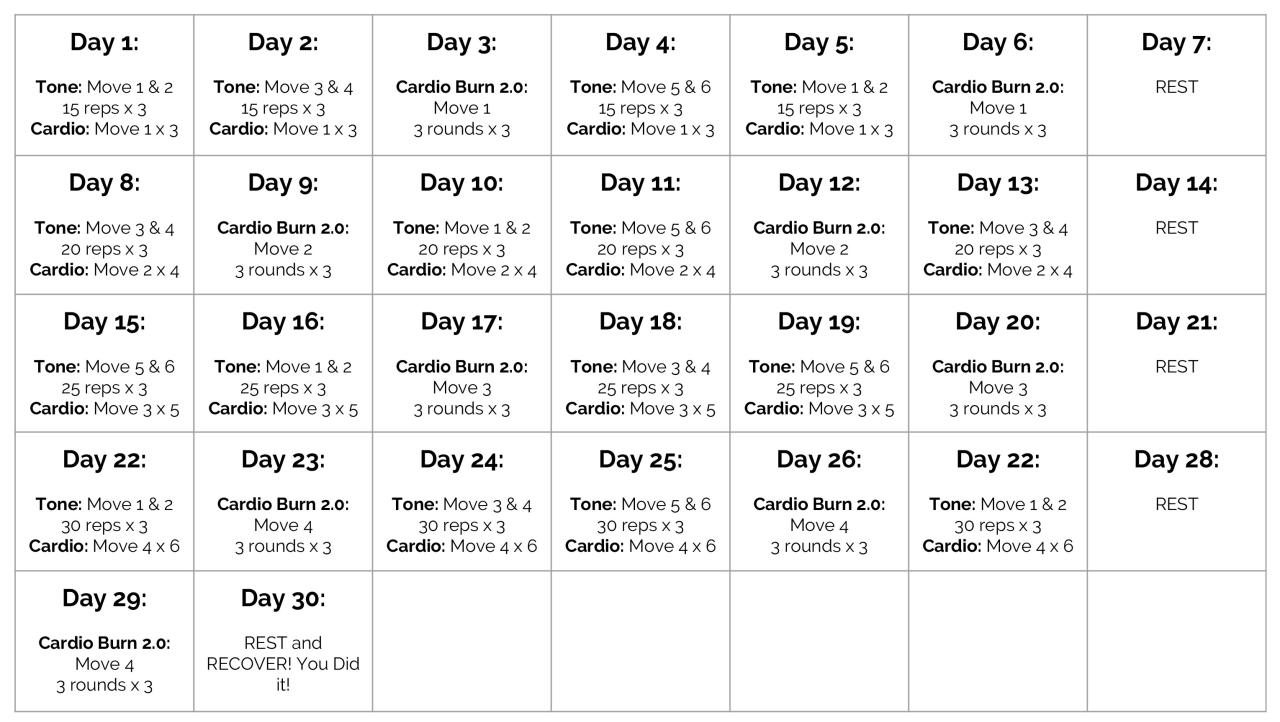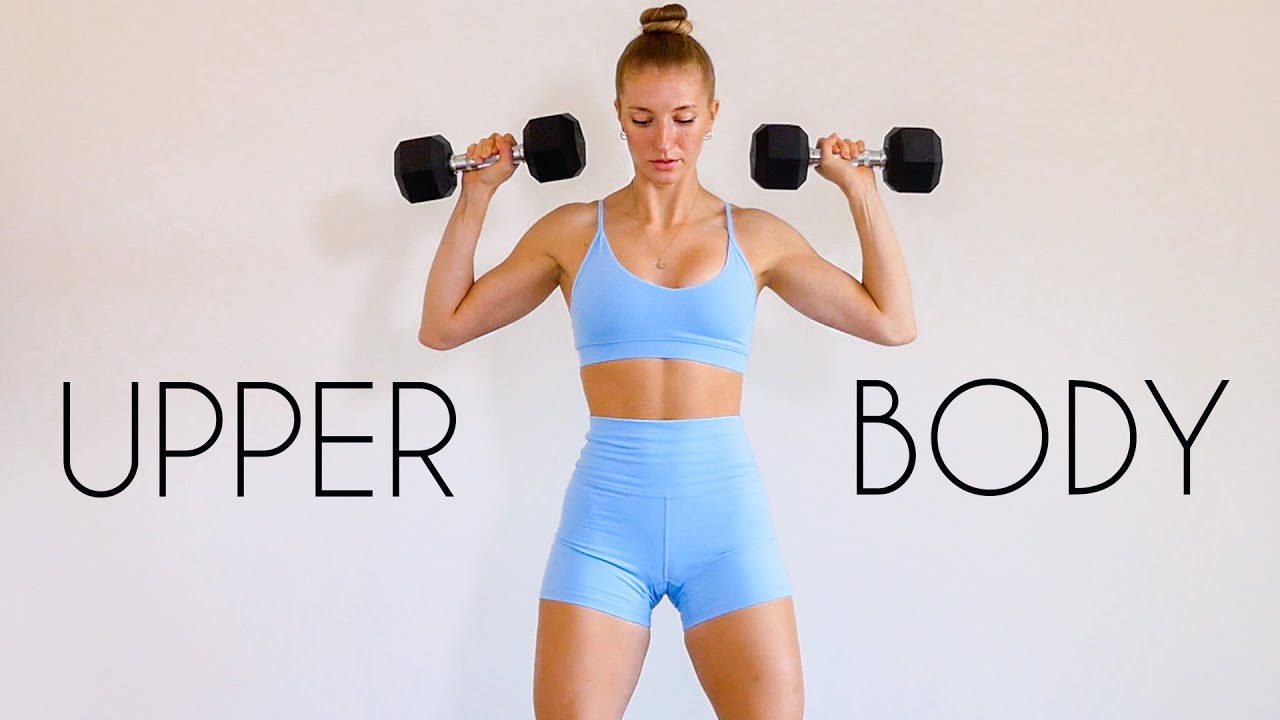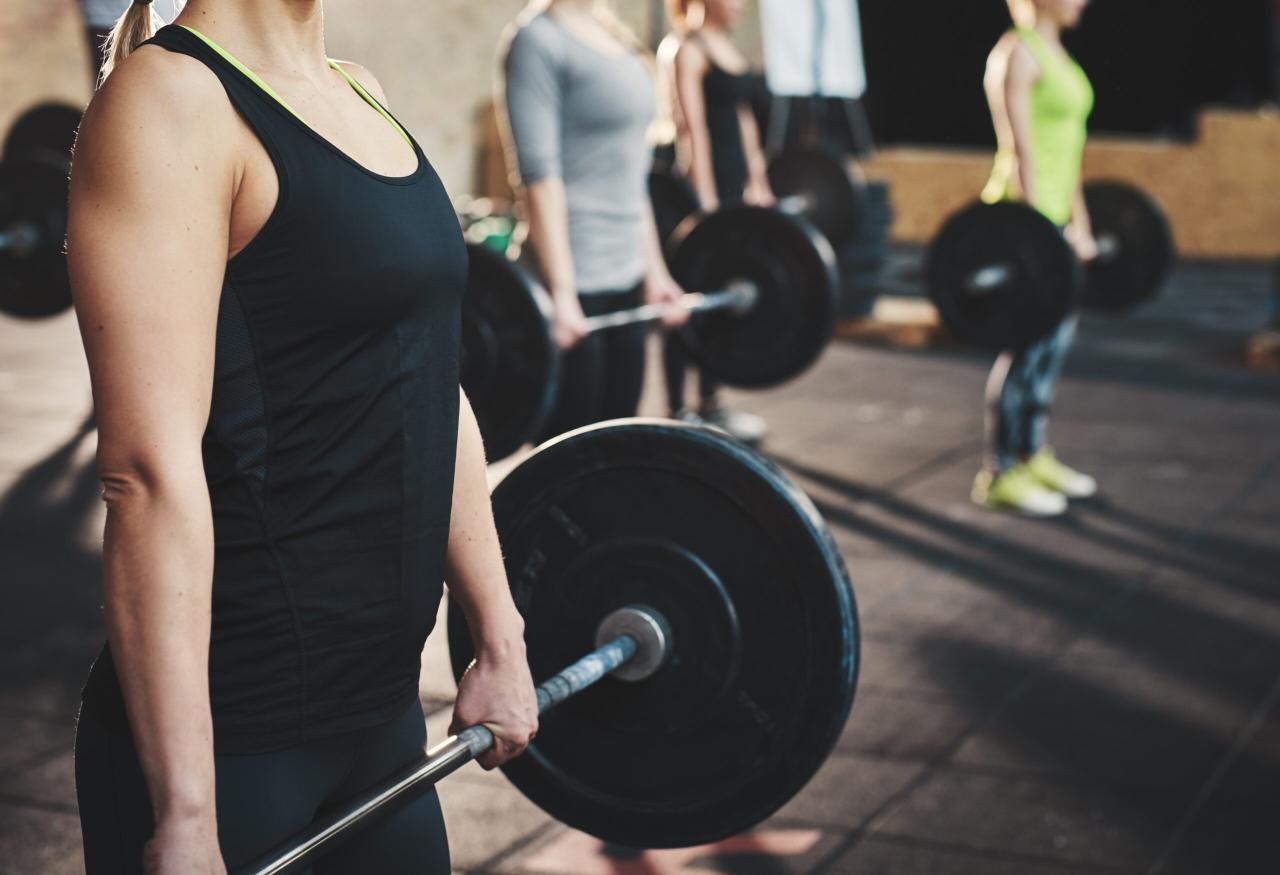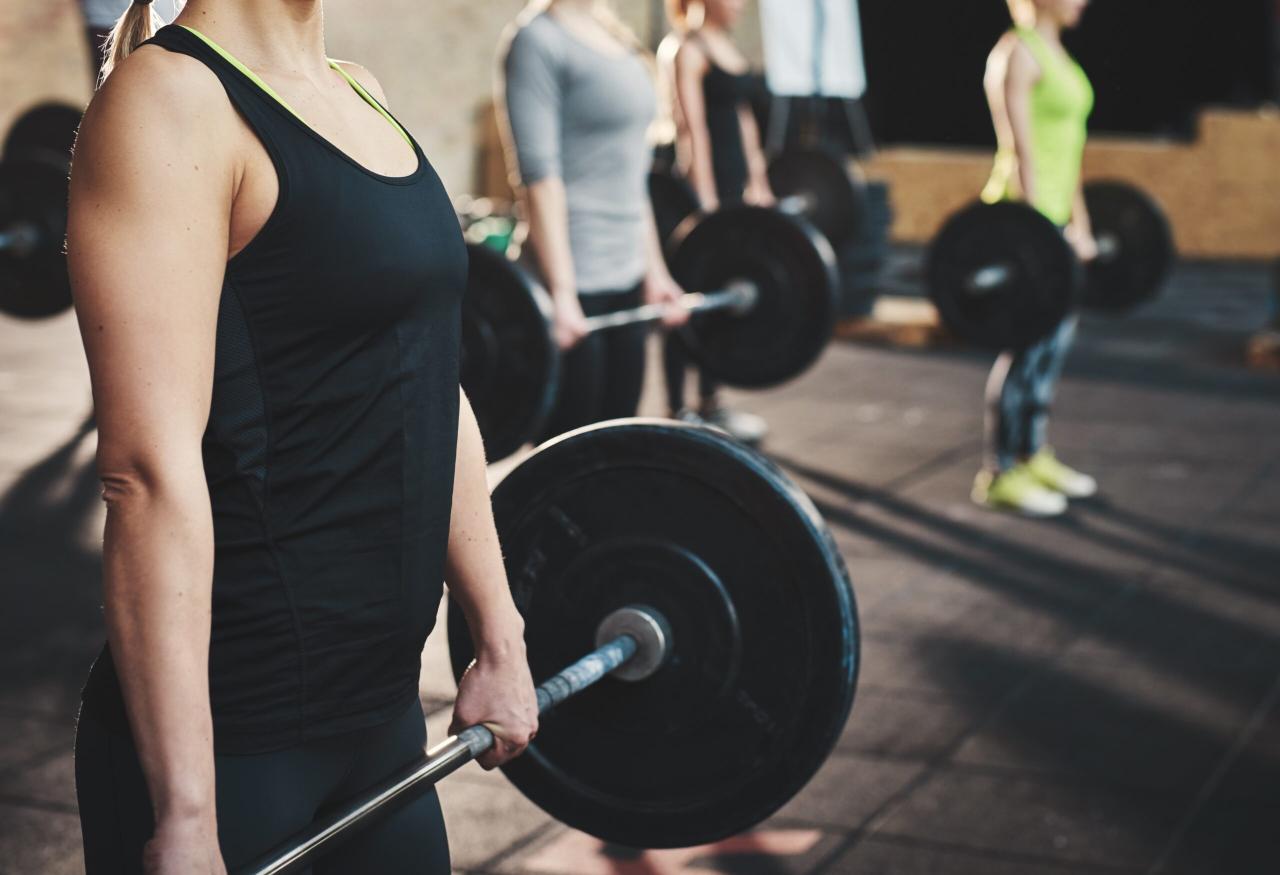Strength training program for building muscle and toning for women at home – Strength Training Program for building muscle and toning for women at home: ditch the dusty dumbbells gathering cobwebs in the garage and unleash your inner Amazon! Forget grueling gym memberships and questionable personal trainers – we’re bringing the iron (or, you know, resistance bands) to
-your* castle. This program isn’t about becoming a bodybuilder overnight (unless that’s your jam, then go for it!), it’s about sculpting a stronger, more confident you, all from the comfort of your living room.
Get ready to sweat, laugh (maybe a little groan), and discover a body you’ll absolutely adore.
This guide will walk you through a beginner-friendly, four-week strength training program, complete with easy-to-follow exercises and a progression plan to keep you challenged and motivated. We’ll cover everything from proper form (because nobody wants a wonky squat) to delicious, muscle-building meals. We’ll even tackle those pesky myths about women and weightlifting – because strong is the new beautiful, and biceps are the new bling.
Introduction to Strength Training for Women at Home

Forget the dusty old stereotype of women and weights! Strength training isn’t just for bulging biceps and competitive bodybuilders; it’s a fantastic way for women to sculpt a stronger, more toned physique, boost metabolism, and generally feel like a superhero in their own right. And the best part? You don’t need a fancy gym membership to reap the rewards.
This program empowers you to build muscle and tone up from the comfort of your own home, saving you time, money, and the awkwardness of navigating a crowded gym.Home workouts offer a level of convenience and privacy that many women find incredibly appealing. No more battling for equipment, worrying about what you look like in workout gear, or dealing with judgmental stares.
Your living room becomes your personal sanctuary, a space where you can focus on your fitness goals without distractions. Plus, working out at home fits seamlessly into your schedule; no more rushing to and from the gym, squeezing workouts between work and other commitments. You’re the boss of your workout time!
Necessary Equipment for Home Strength Training
Building a powerful physique at home doesn’t require a mountain of equipment. In fact, you can achieve amazing results with minimal investment. A well-rounded home strength training program can be built around just a few key items. This allows you to focus on the effective execution of exercises rather than getting bogged down by complex machinery.
- Resistance Bands: These versatile tools come in various resistance levels, allowing you to progressively overload your muscles as you get stronger. They’re lightweight, portable, and perfect for a wide range of exercises targeting all major muscle groups.
- Dumbbells: A set of adjustable dumbbells (or even a couple of fixed-weight pairs) offers a significant upgrade in resistance compared to bodyweight exercises. They allow for a greater range of motion and more targeted muscle activation.
- Yoga Mat: Provides cushioning for floor exercises, protecting your joints and providing a comfortable surface for stretches and cool-downs. It’s a small but significant investment in your comfort and safety.
- A Sturdy Chair: Believe it or not, a sturdy chair can be a surprisingly useful piece of equipment for dips, step-ups, and other exercises. Just make sure it’s stable and can support your weight.
“Remember, consistency is key! Even a few short, effective workouts each week will yield impressive results over time.”
Designing a Beginner-Friendly Program
So, you’re ready to unleash your inner superheroine and sculpt a body that’s both strong and stunning? Fantastic! But before you start bench-pressing your sofa (don’t!), let’s craft a beginner-friendly strength training program that’s as effective as it is enjoyable. We’ll focus on building a solid foundation, avoiding injuries, and making this a sustainable habit, not a grueling punishment.
Remember, consistency is queen in the fitness kingdom!This program prioritizes proper form and gradual progression to help you build strength and muscle without risking injury. We’ll start with simple exercises, manageable sets and reps, and ample rest to let your muscles recover and grow stronger. Think of it as a gentle but firm hand guiding you toward your fitness goals.
A Sample 4-Week Beginner Strength Training Program
This program focuses on major muscle groups, ensuring a balanced workout. Remember to listen to your body and adjust as needed. Rest is just as important as the workout itself – it’s where the magic of muscle growth happens!
| Exercise | Sets | Reps | Rest (seconds) |
|---|---|---|---|
| Squats | 3 | 10-12 | 60 |
| Push-ups (on knees if needed) | 3 | 8-10 | 60 |
| Rows (using resistance bands or water bottles) | 3 | 10-12 | 60 |
| Lunges (alternating legs) | 3 | 10-12 per leg | 60 |
| Plank | 3 | 30-60 seconds | 60 |
Workout Schedule for Beginners
Consistency trumps intensity, especially when starting. Aim for three workouts per week, with at least one day of rest between sessions. This allows your muscles to recover and prevents overtraining, which can lead to plateaus and injuries. A sample schedule could be: Monday, Wednesday, and Friday. Don’t be afraid to take extra rest days if you feel sore or fatigued.
Your body will thank you!
Tips for Proper Form and Technique
Proper form is crucial to maximize results and minimize the risk of injury. Think quality over quantity. Here are some key points:
Maintain a neutral spine: Avoid arching or rounding your back during exercises like squats and rows. Imagine a straight line from your head to your tailbone.
Engage your core: Keeping your core muscles engaged throughout your workout will help stabilize your body and protect your spine. Think about pulling your belly button towards your spine.
Control the movement: Avoid jerky movements. Move slowly and deliberately, focusing on the muscles you’re working.
Listen to your body: If you feel pain, stop immediately. Don’t push through pain.
Start light: Begin with lighter weights or resistance bands to master the form before increasing the intensity.
Ditch the flabby excuses and embrace your inner Amazon! A killer home strength training program for building muscle and toning for women involves smart choices, and that means knowing your moves. Check out these awesome muscular strength exercises to sculpt those guns and glutes. Remember, consistency is key in your home strength training program – you’ll be amazed at the results!
Intermediate and Advanced Program Progression: Strength Training Program For Building Muscle And Toning For Women At Home

So, you’ve conquered the beginner program and are feeling like a superheroine? Fantastic! Now it’s time to level up your strength training game. Think of your beginner program as the training montage in your personal action movie – now we’re moving into the intense, high-stakes sequences. Getting stronger and more sculpted requires a smart and consistent approach to progressive overload.Progressive overload is the secret sauce to muscle growth.
It simply means gradually increasing the demands placed on your muscles over time. This forces your body to adapt and build more muscle. We’ll achieve this by tweaking weight, reps, sets, and exercise difficulty. Don’t worry; it’s not about suddenly lifting a car – it’s about making small, manageable increases that lead to significant results. Think of it as climbing a mountain, one carefully placed step at a time, instead of attempting a terrifying leap of faith.
Progressive Overload Techniques for Home Workouts
Progressive overload isn’t just about adding more weight; it’s a multifaceted approach. Here’s how you can creatively increase the challenge of your home workouts without needing a full gym’s worth of equipment:
- Increase Weight: If you’re using dumbbells, gradually increase the weight you lift. Even small increases (1-2 pounds) can make a difference over time. If you’re using resistance bands, try moving to a band with higher resistance. Alternatively, if using household items like water bottles, increase the amount of water. Think of it like a slow but steady climb, one pound at a time!
- Increase Reps: Once you can comfortably complete all the reps in a set, increase the number of repetitions you perform for each exercise. For example, if you’re doing 10 reps, try 12 next time. This will lead to muscle fatigue and growth, and it is a very effective way to increase strength.
- Increase Sets: Similar to reps, once you’ve mastered the reps, increase the number of sets you do for each exercise. If you’re doing 3 sets, try adding a fourth. This increases the total volume of work your muscles perform.
- Increase Exercise Difficulty: This doesn’t necessarily mean doing harder exercises, but it could mean altering your technique. For example, if you’re doing squats, you can progress to jump squats. Or, if you’re doing push-ups on your knees, work towards full push-ups. Think of it as a gradual increase in the intensity of your training.
- Reduce Rest Time: Decreasing the rest periods between sets increases the intensity of your workout, making your muscles work harder. Try reducing your rest time by 15-30 seconds per set.
- Incorporate Advanced Techniques: Once you’re comfortable with the basics, consider adding advanced techniques like drop sets (immediately doing another set with lighter weight after failure), supersets (performing two exercises back-to-back with minimal rest), or circuit training (performing a series of exercises with minimal rest in between).
Sample 8-Week Intermediate Program
This program builds upon a basic beginner routine, focusing on progressive overload. Remember to listen to your body and adjust as needed. Rest is crucial for muscle recovery! Each week, aim to increase the weight, reps, sets, or exercise difficulty in at least one exercise.
This program assumes you’ve established a solid foundation with a beginner program. It focuses on compound movements for maximum muscle engagement and calorie burn. Remember to maintain good form to prevent injury.
- Week 1-4:
- Squats (3 sets of 10-12 reps)
- Push-ups (3 sets of as many reps as possible)
- Rows (using resistance bands or water bottles, 3 sets of 10-12 reps)
- Lunges (3 sets of 10-12 reps per leg)
- Plank (3 sets, hold for 30-60 seconds)
- Week 5-8: Increase weight/reps/sets from Week 1-4 and incorporate the following variations:
- Squats: Add jump squats (1 set of 8-10 reps) or goblet squats (using a dumbbell or heavy object)
- Push-ups: Incorporate incline push-ups (hands on a raised surface) or decline push-ups (feet elevated).
- Rows: Increase resistance or try different variations like bent-over rows.
- Lunges: Add walking lunges or try reverse lunges.
- Plank: Try side planks (hold for 30-60 seconds per side).
Remember: Consistency is key! Even small improvements each week add up to significant results over time.
Essential Exercises for Muscle Building and Toning

Let’s ditch the dusty old dumbbells and embrace the power of your own body! This section unveils ten fantastic bodyweight exercises that’ll sculpt your muscles and leave you feeling like a superhero (without the cape, unless you want one). Remember, proper form is key – prioritize quality over quantity to avoid injuries and maximize results. Think slow, controlled movements, feeling the burn in the targeted muscles.
Bodyweight Exercises for Major Muscle Groups
These exercises target major muscle groups, providing a full-body workout that’s both effective and adaptable to different fitness levels. We’ll explore variations to challenge yourself as you progress.
- Squats: Targets legs and glutes. Stand with feet shoulder-width apart, toes slightly outward. Lower your hips as if sitting in a chair, keeping your back straight and chest up. Push through your heels to return to standing. Variations: Increase difficulty with jump squats or pistol squats (advanced); decrease difficulty by performing squats against a wall for support.
- Lunges: Targets legs and glutes. Step forward with one leg, bending both knees to 90 degrees. Keep your front knee aligned with your ankle and your back knee off the ground. Push off with your front foot to return to starting position. Alternate legs.
Variations: Increase difficulty with walking lunges or reverse lunges; decrease difficulty by performing lunges holding onto a chair or wall for balance.
- Push-ups: Targets chest, shoulders, and triceps. Start in a plank position, hands shoulder-width apart. Lower your chest towards the floor, bending your elbows. Push back up to the starting position. Variations: Increase difficulty with incline push-ups (hands on a raised surface) or decline push-ups (feet on a raised surface); decrease difficulty by performing push-ups against a wall or on your knees.
- Rows (using a sturdy table or chair): Targets back and biceps. Lean forward, placing your hands on a sturdy surface, slightly wider than shoulder-width apart. Keep your back straight and core engaged. Pull your chest towards the surface, squeezing your shoulder blades together. Slowly lower back to starting position.
Variations: Increase difficulty by using a higher surface or adding weight; decrease difficulty by using a lower surface or performing the exercise with your knees on the ground.
- Plank: Targets core. Hold a straight line from head to heels, supporting your weight on your forearms and toes. Engage your core to maintain a stable position. Variations: Increase difficulty by holding for longer durations or performing side planks; decrease difficulty by performing a forearm plank on your knees.
- Glute Bridges: Targets glutes and hamstrings. Lie on your back with knees bent and feet flat on the floor. Lift your hips off the floor, squeezing your glutes at the top. Slowly lower your hips back down. Variations: Increase difficulty by raising one leg at a time or adding weight across your hips; decrease difficulty by performing the exercise with your feet further away from your hips.
- Superman: Targets back and glutes. Lie on your stomach with arms and legs extended. Simultaneously lift your arms, legs, and chest off the floor, engaging your back muscles. Slowly lower back down. Variations: Increase difficulty by holding the position for longer or adding a small weight to your hands; decrease difficulty by lifting only your arms and legs alternately.
- Tricep Dips (using a chair): Targets triceps. Place your hands on the edge of a sturdy chair, fingers facing forward. Slide your hips forward off the chair, keeping your arms straight. Bend your elbows to lower your body, then push back up. Variations: Increase difficulty by extending your legs further out; decrease difficulty by bending your knees.
- Overhead Press (using water bottles or cans): Targets shoulders and triceps. Hold light weights (water bottles work great!) at shoulder height. Press the weights straight overhead, keeping your core engaged. Slowly lower the weights back to shoulder height. Variations: Increase difficulty by using heavier weights; decrease difficulty by using lighter weights or performing the exercise seated.
- Bicep Curls (using water bottles or cans): Targets biceps. Stand with feet shoulder-width apart, holding light weights. Curl the weights towards your shoulders, keeping your elbows close to your sides. Slowly lower the weights back down. Variations: Increase difficulty by using heavier weights or performing hammer curls; decrease difficulty by using lighter weights or performing the exercise seated.
Modifying Exercises for Different Fitness Levels
The beauty of bodyweight training is its adaptability. Adjusting your form, repetitions, sets, and rest periods allows you to customize the intensity to match your current fitness level. Remember to listen to your body and avoid pushing yourself too hard, especially when starting.
Comparing Exercise Effectiveness for Specific Muscle Groups
Different exercises emphasize different muscle fibers within a muscle group. For example, squats primarily work the quads and glutes, while lunges also target the hamstrings and inner thighs. Push-ups are excellent for chest and triceps, but adding incline or decline variations can shift the emphasis. By incorporating a variety of exercises, you can achieve a well-rounded workout that targets all aspects of your muscles.
Nutrition and Recovery for Optimal Results
Building muscle and achieving that toned physique isn’t just about lifting weights; it’s a delicious dance between iron and nutrition. Think of your body as a high-performance sports car – you wouldn’t put regular gas in a Ferrari, would you? Similarly, fueling your body with the right nutrients is crucial for maximizing your strength training efforts and ensuring your muscles recover like rock stars.Let’s talk about the fuel that fires your fitness engine: protein, sleep, hydration, and stress management.
These elements work together synergistically, so neglecting one area can significantly impact your overall progress.
Sample Meal Plan for Muscle Growth and Recovery
A well-structured meal plan is your secret weapon in this muscle-building mission. The following plan emphasizes protein intake to support muscle growth and repair. Remember to adjust portion sizes based on your individual calorie needs and activity level. Consulting a registered dietitian or nutritionist can provide personalized guidance.
| Meal | Time | Food Items | Protein Source |
|---|---|---|---|
| Breakfast | 7:00 AM | Greek yogurt with berries and a sprinkle of nuts | Greek Yogurt |
| Mid-Morning Snack | 10:00 AM | Hard-boiled eggs and a small apple | Eggs |
| Lunch | 1:00 PM | Chicken salad sandwich on whole-wheat bread with a side salad | Chicken |
| Afternoon Snack | 4:00 PM | Protein shake with banana and spinach | Protein Powder |
| Dinner | 7:00 PM | Salmon with roasted vegetables and quinoa | Salmon |
The Importance of Sleep, Hydration, and Stress Management for Muscle Recovery
Think of sleep as your muscle’s personal spa day. During sleep, your body releases growth hormone, crucial for muscle repair and growth. Aim for 7-9 hours of quality sleep each night. Dehydration hinders muscle function and recovery; consistently drink plenty of water throughout the day. Finally, chronic stress elevates cortisol levels, which can interfere with muscle growth.
Incorporate stress-reducing activities like yoga, meditation, or spending time in nature.
The Role of Supplements in Supporting Strength Training Goals, Strength training program for building muscle and toning for women at home
Supplements can be helpful additions to a well-rounded diet and training program, but they should never replace whole foods. Protein powder can be convenient for increasing protein intake, creatine can boost strength and power, and BCAAs may help reduce muscle soreness. However, it’s crucial to choose reputable brands and consult with a healthcare professional before starting any new supplement regimen.
Remember, a balanced diet remains the cornerstone of optimal health and fitness.
Addressing Common Concerns and Misconceptions

Let’s tackle some of the myths and worries that might be holding you back from unleashing your inner Amazonian warrior. Strength training for women is often shrouded in misinformation, so let’s clear the air and get you lifting with confidence! We’ll address common fears, injury prevention, and strategies to keep you motivated and crushing your fitness goals.
Muscle Bulk and Femininity
The fear of becoming a bodybuilder overnight is a common deterrent for women considering strength training. The truth is, building significant muscle mass requires a highly specialized diet, intense training regimen, and often, supplemental hormones. For the average woman, strength training leads to lean muscle growth, resulting in a more toned, defined physique – the kind that’s both strong and undeniably feminine.
Think sculpted arms, a stronger core, and a more confident posture – not a sudden transformation into a muscle-bound behemoth. Instead of fearing bulk, embrace the strength and definition that strength training offers, enhancing your natural curves and boosting your overall well-being.
Addressing and Preventing Common Injuries
Proper form is paramount to avoid injuries. Think of your body as a finely tuned machine; if you use it incorrectly, it’ll break down. Start with lighter weights, focusing on perfecting your technique. Gradually increase the weight as your strength improves. Listen to your body! Pain is not gain.
If you feel sharp pain, stop immediately. Rest and allow your body to recover. Consider consulting a physical therapist or certified personal trainer for personalized guidance on proper form and injury prevention strategies. They can assess your individual needs and provide tailored exercises to help you build strength safely and effectively. Investing in a foam roller for post-workout recovery can also significantly reduce muscle soreness and prevent stiffness.
Maintaining Motivation and Consistency
Staying motivated with a home workout routine can be challenging, but it’s absolutely achievable. Find a workout buddy (even a virtual one!), set realistic goals, and celebrate your milestones, no matter how small. Create a dedicated workout space in your home, free from distractions. Make it visually appealing – add some inspiring posters or plants. Mix up your workouts to prevent boredom; try different exercises, incorporate bodyweight training, or explore online fitness classes.
Remember, consistency is key. Even a short, 15-minute workout is better than nothing. Track your progress and reward yourself for your hard work. Don’t be afraid to adjust your routine as needed. Consistency, not intensity, is the real muscle builder here.
Think of it as a marathon, not a sprint.
Visual Aids and Illustrations
Let’s ditch the vague workout diagrams and dive into some seriously helpful visual descriptions of exercises. Think of this as your personal, pocket-sized fitness instructor, ready to guide you through perfect form every time. Remember, proper form is key to preventing injuries and maximizing your gains. We’re building muscle, not breaking bones!
Squat Form
The squat is a queen among exercises, building leg and glute strength like nobody’s business. Imagine a majestic throne – that’s your squat position. To achieve this regal posture, begin with your feet shoulder-width apart, toes slightly pointed outwards. Your back should remain straight, engaging your core muscles as if you’re bracing for a gentle hug from a giant teddy bear (core engagement is crucial for stability).
Lower your hips as if you’re about to sit in an invisible chair, keeping your chest up and your weight balanced on your heels. The ideal depth is where your thighs are parallel to the ground, but don’t force it if you’re a beginner. Slowly return to the starting position, squeezing your glutes at the top. Think powerful, controlled movements, not a frantic bouncing competition.
Push-Up Form
Push-ups are the ultimate bodyweight challenge, sculpting your chest, shoulders, and triceps. Start with your hands slightly wider than shoulder-width apart, fingers pointing forward. Your body should form a straight line from head to heels, engaging your core to prevent sagging. Lower your chest towards the floor, bending your elbows at a 45-degree angle. Keep your elbows slightly tucked in to protect your shoulders.
Push back up to the starting position, exhaling as you extend your arms. For beginners, consider doing push-ups against a wall or an elevated surface like a sturdy table to modify the intensity. As you get stronger, you can progress to incline push-ups (hands on a bench) before tackling the full-on floor push-up. Advanced variations include plyometric push-ups (adding a jump at the top) or single-arm push-ups (for the truly daring).
Remember, proper breathing is key – inhale as you lower, exhale as you push up.
Plank Form
The plank is the unsung hero of core strengthening, a deceptively simple exercise that delivers major results. Start in a push-up position, but instead of your hands, rest your forearms on the floor, elbows directly beneath your shoulders. Your body should form a straight line from head to heels, engaging your core as if you’re trying to hold a delicious cookie between your belly button and spine (resist that urge to actually eat the cookie, though!).
Maintain this position, focusing on steady, controlled breathing. Don’t let your hips sag or your butt stick up in the air. To increase difficulty, try a side plank, holding your body up on one forearm and the side of your foot, or elevate your feet onto a bench. Remember, a plank isn’t a race, it’s a test of endurance and core strength.
Conclusion
So, there you have it – your ticket to a stronger, more toned you, all without leaving the house! Remember, consistency is key. Don’t be discouraged by slow progress; celebrate every tiny victory (like finally mastering that perfect push-up!). This isn’t just about physical transformation; it’s about building mental resilience and discovering a newfound love for self-care. Now go forth and conquer those squats – your future self (and your abs) will thank you!
